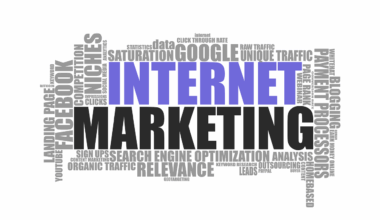Leveraging Analytics for Better Social Media ROI
In the current digital landscape, businesses must navigate the complexities of social media ROI. Understanding what metrics define success is crucial. Analytics tools play an essential role in collecting data that reflects real performance. These tools can provide insights into audience engagement, conversion rates, and overall effectiveness of social campaigns. Such metrics help in measuring social media’s impact on business goals. To improve ROI, it is vital to track user interactions across different platforms. Key performance indicators (KPIs) should be systematically monitored to evaluate success. Each social media channel has distinct characteristics which can affect ROI outcomes. Therefore, businesses should tailor their strategies accordingly for each platform. Examining the conversion paths that users take after engaging with social content is also critical. Businesses can efficiently allocate resources and boost engagement by understanding these paths. Utilizing tools like Google Analytics or native platform insights can effectively showcase performance trends. The combination of quantitative data with user feedback can result in a more nuanced understanding of social media performance results. In turn, informed marketing decisions can significantly enhance ROI and drive business growth.
A core aspect to consider for better social media ROI is audience analysis. Knowing your audience allows for targeted content strategies. Analytics tools can reveal valuable demographic insights, such as age, gender, and location, contributing to in-depth assessments of engagement. Tailoring content to resonate with specific audience segments is essential for improved interaction rates. Additionally, tracking user behavior helps brands understand what type of content generates the most engagement and conversions. For instance, video content may perform better on platforms like Instagram and TikTok, while articles may fare well on LinkedIn. Utilizing this analysis strengthens the effectiveness of marketing campaigns, yielding a higher ROI. Developing a set of personas based on data gathered helps marketers visualize their target audience. Additionally, by segmenting audiences, it becomes feasible to create more personalized and relevant messages. It is also important to consider different consumer touchpoints when evaluating the effectiveness of various content types. Testing various campaigns and measuring their outcomes demonstrate what drives engagement. Making data-driven adjustments can lead to greater returns on investment. Focusing on audience preferences leads to effective strategies that amplify brand messages across social platforms.
Optimizing Content for Engagement
Content optimization is pivotal when aiming for robust social media ROI. This entails creating compelling content that maximizes engagement across platforms. The type of content shared should resonate with the audience and encourage interaction. Engaging visuals, informative videos, or insightful articles tend to attract a higher engagement rate. Additionally, incorporating storytelling into content can create emotional connections with audiences, driving shares and comments. Identifying peak posting times based on when the audience is most active also aids in reaching more people. Analytics tools provide insights on when users are online, optimizing posting schedules accordingly. Regularly reviewing content performance helps marketers understand what works. A/B testing different formats, headlines, and calls to action can give clarity on user preferences. Marketers should also highlight user-generated content as it often resonates well with audiences. This can foster community engagement and enhance trustworthiness. Moreover, analyzing competitors’ successful content strategies can uncover gaps and opportunities in one’s approach. By continually optimizing content based on performance metrics, social media efforts are more likely to translate into higher ROI.
Engagement metrics are pivotal for evaluating social media ROI effectively. These metrics include likes, shares, comments, and click-through rates on different posts. Monitoring these indicators provides important insights into whether your audience finds the content appealing and relevant. High engagement often translates to better visibility due to social platforms’ algorithms prioritizing popular content. Expanding reach means increasing the potential for leads and conversions. In addition, analyzing the performance of various content types across multiple channels can also yield valuable insights. Determining which formats are receiving significant engagement can drive future strategies focused on enhancing returns. For instance, a business may find that videos perform exceptionally well, leading to increased investments in video content production. Additionally, interactions with branding can also build a loyal audience base, fostering long-term engagement. Tracking engagement over time sheds light on trends and evolving audience preferences. This applied knowledge can be leveraged to fine-tune marketing strategies. Consistently high engagement levels can indicate a strong connection between the brand and its audience, thus enhancing overall ROI. All of this highlights that continuous monitoring and agile adjustments are key to achieving substantial returns.
Utilizing Paid Advertising Effectively
Incorporating paid advertising into social media strategies enhances overall ROI significantly. Paid ads offer precise targeting capabilities, helping businesses reach the right audiences effectively. They can be tailored based on demographics, interests, and behaviors, allowing for a focused approach. Furthermore, paid promotions often yield immediate visibility that organic posts may not achieve. Utilizing analytics tools allows for close monitoring of ad performance, providing insights into click rates and conversions. Such metrics help determine the success of the ad campaigns, facilitating necessary adjustments for maximum ROI. Continuously testing various elements within ads can refine messaging and overall design. For instance, incorporating different images or copy can lead to higher engagement rates. Regularly assessing ROI on advertising spend allows for better budget management, enhancing returns. Business owners should always calculate the cost of customer acquisition compared to the lifetime value of a customer. This financial awareness can guide adjustments in campaign strategies. Investing in data-backed advertisements can drive significant traffic and conversions on social platforms. Properly harnessing the power of paid advertising not only boosts visibility but can lead to sustainable business growth.
Measuring the ROI of social media initiatives requires a clear understanding of conversion tracking. Proper tracking allows businesses to assess how social efforts contribute to overall sales. Implementing conversion tracking on various platforms is fundamental for evaluating success. Using tools such as Google Analytics helps identify sources of traffic stemming from social channels, attributing sales correctly. Creating unique URLs for social posts can also lead to accurate tracking of conversions. Additionally, setting up goals within analytics platforms aids in monitoring user actions that indicate conversions. Whether signing up for a newsletter or completing a purchase, tracking these actions analysts better understand user behavior. By analyzing conversion rate data, businesses can deduce which campaigns are most effective. It is important to measure not just the quantity of conversions but also their quality. Understanding the lifespan and purchasing behaviors of customers acquired through social media provides further insight. Customized reports showcasing these metrics can aid in presenting outcomes to stakeholders. Armed with this data, businesses can refine their approach, align budgets, and consequently, improve social media ROI significantly.
Continuous Improvement Through Insights
For sustainable growth, businesses must embrace continuous improvement processes within social media strategies. Regular assessments of analytics can unveil performance trends that help stakeholders make informed decisions. Companies can identify peaks in engagement and adapt strategies to capitalize on these moments. Moreover, understanding failures is equally important; recognizing what did not work can provide vital lessons. Encouraging team collaboration in analyzing social media data leads to innovative ideas and campaigns. In transforming analytics into actionable insights, organizations can address gaps in performance actively. Additionally, ongoing training and development for the marketing team can enhance capabilities in leveraging data effectively. By empowering teams with analytical skills, organizations can foster a culture of data-driven decision-making. Utilizing insights consistently allows businesses to remain agile in an ever-evolving social media environment. This adaptability often leads to improved results and a more substantial return on investment. The key is to not only rely on past data but to foresee trends and remain ahead of the competition. Embracing a philosophy of continuous testing, learning, and adapting will ultimately refine social strategies and improve overall performance.
Building a robust conclusion is necessary when evaluating social media ROI. Reflecting on analytics allows businesses to comprehend their past efforts and future strategies effectively. Understanding the importance of analytics is paramount for any brand looking to innovate its approach. A comprehensive analysis reveals underperforming areas and highlights successful tactics. It is beneficial to involve all stakeholders in discussing findings; transparency creates alignment on strategic goals. Closing the loop on data utilization promotes accountability and shared objectives across teams. Companies can also consider external factors that may influence social performance, such as market trends and competition. Remaining aware of industry shifts ensures that social strategies remain relevant. Additionally, looking into long-term trends rather than just short-term results provides context for decision-making. Brands should consider developing benchmarks to measure performance effectively against industry standards. All these efforts combined will lead to a higher social media ROI. As digital landscapes continuously evolve, organizations must remain adaptable while keeping their objectives clear. Striking a balance between data analysis and creative strategy ensures a holistic approach for driving meaningful results across social platforms.


